Don't wanna be here? Send us removal request.
Photo
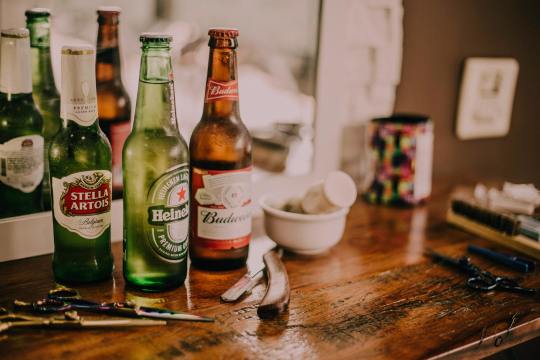
“DE DAARU is the best bar and pub in Delhi, it has two bars in the city, the beer bar has food restaurant, with all kinds of drinks available like whiskey, rum, beer, scotch, vine, desi, tharra, Daru, alcohols. We strive to make our Adda, the best of happiness with friends and family. Enjoy the good time at De daaru with pocket-friendly foods and a wide range of Daaru options starting from Absolut to Glenvid. R2, Rectagle Building1, Unit 1 & 2, Saket New Delhi 110017 +917481000009”
0 notes
Photo
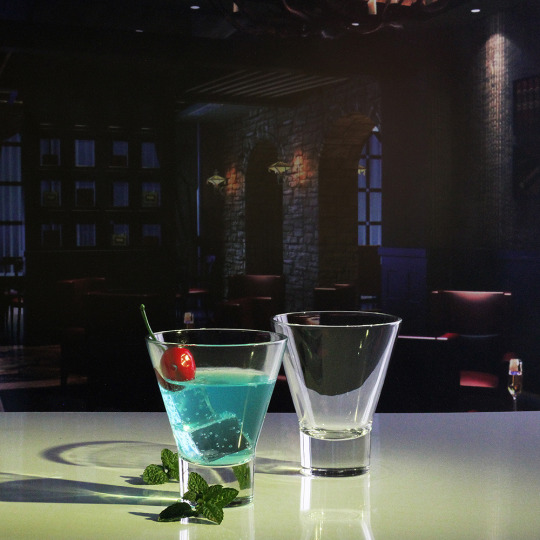
“There are a thousand small honest breweries in this country that because they have been too poor and localized to compete with the big boys have been forced to close, or else operate under famous names while they turn out yeast, or hops, or some other important but unnamed ingredient of the main company's beer. Now, with the trains full of soldiers and supplies rather than pale ale, perhaps people far from the great breweries will turn again to their local beer factories and discover, as their fathers did thirty years ago, that a beer carried quietly three miles is better than one shot across three thousand on a fast freight.”
“The Australian jewel beetle has sex with beer bottles. The beetles are a light chocolate color with dimples all down their back and dark black legs and heads that peek out from underneath their carapeces. Their bodies are big and long instead of round, and they resemble cicadas more than they do ladybugs. The male Australian jewel beetle is hardwired to like certain aspects about the female jewel beetle. They like females to be big, brown, and shiny. The bottles they make love to are bigger, browner, and shinier than any female could ever hope to be. In Australia, a certain type of bottle called stubbies overstimulates male jewel beetles. In a trash heap filled with bottles, you will often see every single stubby covered in male jewel beetles trying to get it on. The stubbies are what evolutionary psychologists call supernormal releasers. They are superstimuli, better than the real thing. The beetles will mate with these bottles even while being devoured by ants.”
“Some beers, especially canned ones, taste exactly the same all the way through. The flavour you get when the beer first hits your tongue is the same as the one you get 'in the middle' of the sip, and in the 'finish'. In the case of many cheaply made beers it's likely that the flavour, such as it is, will die away completely by the time the finish should have arrived, and that the 'aftertaste' will be slightly unpleasant ... Structure is vital to a successful beer ... Complexity is vital to the satisfaction rating of a fine beer ... Typically, a complex beer will have not just various strands of flavour chiming in all at once, like a musical chord, but flavours that are introduced at one point of the tasting process and then recede ... Some beers come up with surprising new flavours that were not predicted in anything that's come before, and just occasionally produce something really wild and wacky ...The most important question to ask of a beer is 'Do I like this, and do I want some more?' There's precious little point ploughing on with a beer you just don't like, no matter how great its international status. But it's also important to attempt a little objectivity, and separate out the question 'Do I like this?' from the quite independent question, 'Does this beer achieve what it sets out to do - is it good at being what it wants to be?”
0 notes
Photo
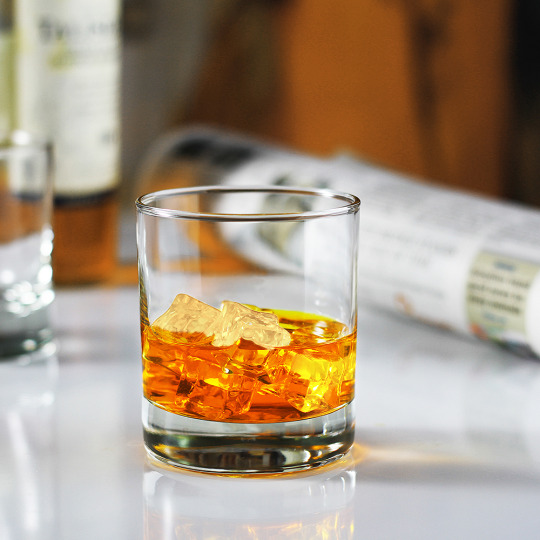
“The whiskey was a good start. I got the idea from Dylan Thomas. He's this poet who drank twenty-one straight whiskeys at the White Horse Tavern in New York and then died on the spot from alcohol poisoning. I've always wanted to hear the bartender's side of the story. What was it like watching this guy drink himself out of here? How did it feel handing him number twenty-one and watching his face crumple up before the fall of the stool? And did he already have number twenty-two poured, waiting for this big fat tip, and then have to drink it himself after whoever came took the body away?”
“To her own heart, which was shaped exactly like a valentine, there came a winglike palpitation, a delicate exigency, and all the fragrance of all the flowery springtime love affairs that ever were seemed waiting for them in the whisky bottle. To mingle their pain their handshake had promised them, was to produce a separate entity, like a child that could shift for itself, and they scrambled hastily toward this profound and pastoral experience.”
1 note
·
View note
Photo
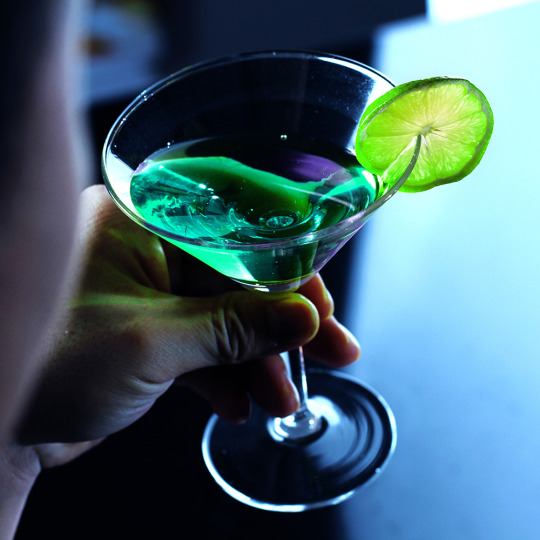
“I see things in windows and I say to myself that I want them. I want them because I want to belong. I want to be liked by more people, I want to be held in higher regard than others. I want to feel valued, so I say to myself to watch certain shows. I watch certain shows on the television so I can participate in dialogues and conversations and debates with people who want the same things I want. I want to dress a certain way so certain groups of people are forced to be attracted to me. I want to do my hair a certain way with certain styling products and particular combs and methods so that I can fit in with the In-Crowd. I want to spend hours upon hours at the gym, stuffing my body with what scientists are calling 'superfoods', so that I can be loved and envied by everyone around me. I want to become an icon on someone's mantle. I want to work meaningless jobs so that I can fill my wallet and parentally-advised bank accounts with monetary potential. I want to believe what's on the news so that I can feel normal along with the rest of forever. I want to listen to the Top Ten on Q102, and roll my windows down so others can hear it and see that I am listening to it, and enjoying it. I want to go to church every Sunday, and pray every other day. I want to believe that what I do is for the promise of a peaceful afterlife. I want rewards for my 'good' deeds. I want acknowledgment and praise. And I want people to know that I put out that fire. I want people to know that I support the war effort. I want people to know that I volunteer to save lives. I want to be seen and heard and pointed at with love. I want to read my name in the history books during a future full of clones exactly like me.
The mirror, I've noticed, is almost always positioned above the sink. Though the sink offers more depth than a mirror, and mirror is only able to reflect, the sink is held in lower regard. Lower still is the toilet, and thought it offers even more depth than the sink, we piss and shit in it. I want these kind of architectural details to be paralleled in my every day life. I want to care more about my reflection, and less about my cleanliness. I want to be seen as someone who lives externally, and never internally, unless I am able to lock the door behind me.
I want these things, because if I didn't, I would be dead in the mirrors of those around me. I would be nothing. I would be an example. Sunken, and easily washed away.”
0 notes
Photo
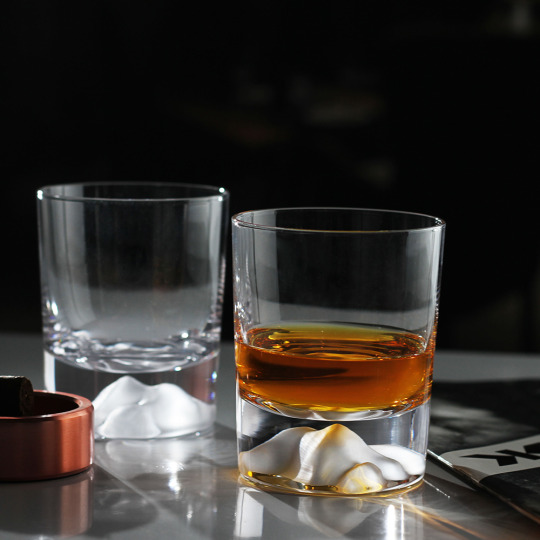
“I see things in windows and I say to myself that I want them. I want them because I want to belong. I want to be liked by more people, I want to be held in higher regard than others. I want to feel valued, so I say to myself to watch certain shows. I watch certain shows on the television so I can participate in dialogues and conversations and debates with people who want the same things I want. I want to dress a certain way so certain groups of people are forced to be attracted to me. I want to do my hair a certain way with certain styling products and particular combs and methods so that I can fit in with the In-Crowd. I want to spend hours upon hours at the gym, stuffing my body with what scientists are calling 'superfoods', so that I can be loved and envied by everyone around me. I want to become an icon on someone's mantle. I want to work meaningless jobs so that I can fill my wallet and parentally-advised bank accounts with monetary potential. I want to believe what's on the news so that I can feel normal along with the rest of forever. I want to listen to the Top Ten on Q102, and roll my windows down so others can hear it and see that I am listening to it, and enjoying it. I want to go to church every Sunday, and pray every other day. I want to believe that what I do is for the promise of a peaceful afterlife. I want rewards for my 'good' deeds. I want acknowledgment and praise. And I want people to know that I put out that fire. I want people to know that I support the war effort. I want people to know that I volunteer to save lives. I want to be seen and heard and pointed at with love. I want to read my name in the history books during a future full of clones exactly like me.
The mirror, I've noticed, is almost always positioned above the sink. Though the sink offers more depth than a mirror, and mirror is only able to reflect, the sink is held in lower regard. Lower still is the toilet, and thought it offers even more depth than the sink, we piss and shit in it. I want these kind of architectural details to be paralleled in my every day life. I want to care more about my reflection, and less about my cleanliness. I want to be seen as someone who lives externally, and never internally, unless I am able to lock the door behind me.
I want these things, because if I didn't, I would be dead in the mirrors of those around me. I would be nothing. I would be an example. Sunken, and easily washed away.”
0 notes
Photo
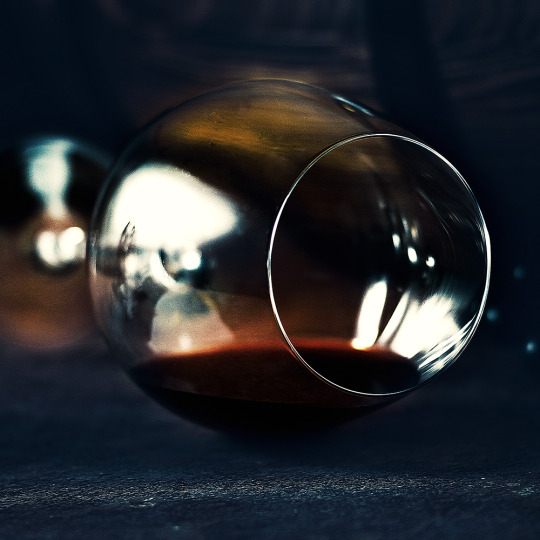
“Alcohol makes other people less tedious, and food less bland, and can help provide what the Greeks called entheos, or the slight buzz of inspiration when reading or writing. The only worthwhile miracle in the New Testament—the transmutation of water into wine during the wedding at Cana—is a tribute to the persistence of Hellenism in an otherwise austere Judaea. The same applies to the seder at Passover, which is obviously modeled on the Platonic symposium: questions are asked (especially of the young) while wine is circulated. No better form of sodality has ever been devised: at Oxford one was positively expected to take wine during tutorials. The tongue must be untied. It's not a coincidence that Omar Khayyam, rebuking and ridiculing the stone-faced Iranian mullahs of his time, pointed to the value of the grape as a mockery of their joyless and sterile regime. Visiting today's Iran, I was delighted to find that citizens made a point of defying the clerical ban on booze, keeping it in their homes for visitors even if they didn't particularly take to it themselves, and bootlegging it with great brio and ingenuity. These small revolutions affirm the human.”
0 notes
Photo
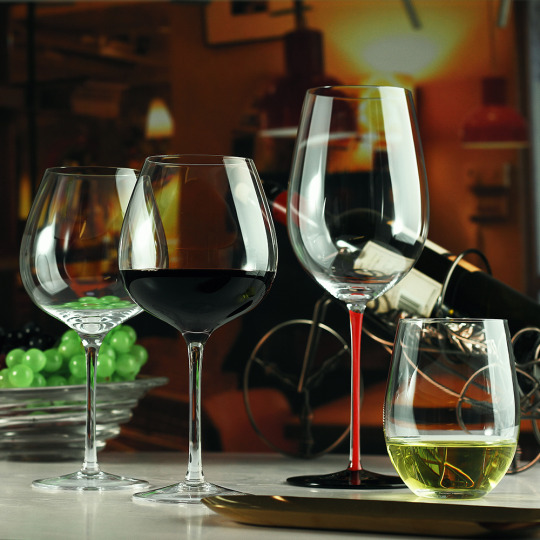
“How very like you, Puck.” Ash’s voice came from a great distance, and the room started to spin. “Offer them a taste of faery wine, and act surprised when they’re consumed by it.” That struck me as hilarious, and I broke into hysterical giggles. And once I began, I couldn’t stop. I laughed until I was gasping for breath, tears streaming down my face. My feet itched and my skin crawled. I needed to move, to do something. I tried standing up, wanting to spin and dance, but the room tilted violently and I fell, still shrieking with laughter. Somebody caught me, scooping me off my feet and into their arms. I smelled frost and winter, and heard an exasperated sigh from somewhere above my head. “What are you doing, Ash?” I heard someone ask. A familiar voice, though I couldn’t think of his name, or why he sounded so suspicious. “I’m taking her back to her room.” The person above me sounded wonderfully calm and deep. I sighed and settled into his arms. “She’ll have to sleep off the effects of the fruit. We’ll likely be here another day because of your idiocy.” The other voice said something garbled and unintelligible. I was suddenly too sleepy and light-headed to care. Relaxing against the mysterious person’s chest, I fell into a heady sleep.”
0 notes
Quote
Ambrosial!" Apicius said to me yet again one afternoon as we chopped beets for the evening meal. The knife revealed dark rings with every slice. There was something precious to me about black food- sinister yet seductive. Oh, how the beet juice would look in glass goblets, the torchlight glinting off the black surface! Apicius loved beet juice, and the rumors about its powers as an aphrodisiac were always a wonderful source of conversation with his guests.
Crystal King, Feast of Sorrow: A Novel of Ancient Rome
0 notes
Photo
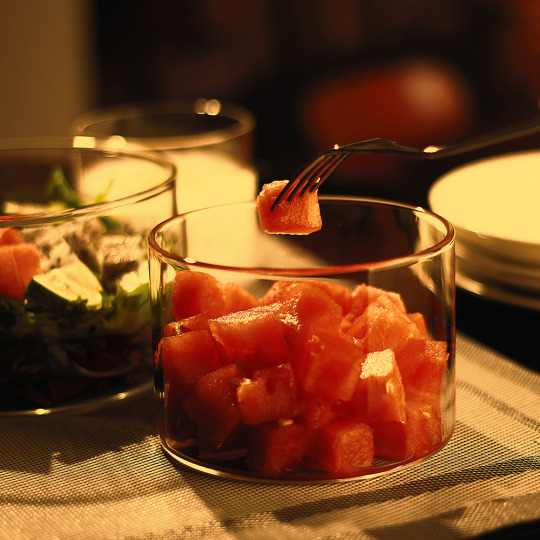
Salad recipe
Practice one vegetable salad Vegetable salad (2 photos) Ingredients: 200g cabbage, 80g tomato, 60g cucumber Accessories: 30 grams of green pepper Seasoning: 15 grams of salad oil, 2 grams of salt, 20 grams of lemon juice, 10 grams of honey Production process 1. Wash all the prepared materials (cabbage, tomato, cucumber, green pepper) separately, slice the cabbage and tomato, and cut the green pepper and onion into ring slices. 2. Mix the chopped ingredients and put them on a plate for later use. 3. Finally, mix all the seasonings (salad oil, salt, lemon juice, honey), stir well, and pour on the vegetables. Method two Making ingredients vegetable salad vegetable salad 1,000 grams of spinach, 50 grams of green onions and 50 grams of garlic, 4 pieces of fresh mint leaves, 100 grams of yogurt, 10 grams of lemon juice, black pepper, and salt. Production process Wash the spinach and blanch it in boiling water, remove the water and squeeze it out, chop into minced pieces, wash the scallions, chop into shreds, peel the garlic and pat it with a knife, chop into mint, wash and shred mint leaves . Put lemon juice, chopped green onion, refined salt and pepper into a spinach bowl, mix well, add yogurt and garlic, sprinkle with mint and serve. Application: Suitable for dizziness, fatigue and weakness caused by overuse of the brain. Method three vegetable salad vegetable salad Making ingredients 20 grams of Roman lettuce, 15 grams of bittern, 20 grams of purple leaf lettuce, 30 grams of magnolia vegetable 20 grams of purple chrysanthemum, 5 grams of olive oil, 5 grams of tarragon vinegar, salt, walnuts, and apple shreds. Production process 1. All kinds of raw raisins are shredded and mixed with apple shreds and walnuts 2. Mix the right amount of olive oil, tarragon vinegar and salt into a dip 3. Decorate with purple chrysanthemum and serve on the plate. You can also choose different vegetables to match this dish according to your preferences. Method four Chicken and Vegetable Salad Ingredients: lettuce, chicory, 1 cup red cabbage, 150g chicken breast, 1 tablespoon sake, a little salt, soy sauce sauce. practice: 1. Boil the chicken breast in water with sake and refined salt, take it out and tear it by hand. Wash the vegetables with cold water and tear them into slices that fit your mouth. 2. Put the vegetables on the plate, then fill the chicken breasts, and then drizzle the sauce. Efficacy analysis: chicken is not only low in calories, but also rich in nutrition. Often eating delicious chicken delicacies can satisfy your appetite, and at the same time, it can inhibit fat growth, allowing you to eat delicious slimming delicacies, and you can easily lose weight. curve. Practice five Making ingredients 50 grams of pineapple, 50 grams of apple, 50 grams of kiwi, 50 grams of banana, 8 small tomatoes, a few cherries; Ingredients 1 cup of red wine, a little sugar; Production process 1. Cut pineapple, apple, kiwi fruit, and banana into sugar cube-sized cubes. Small tomatoes are divided into 4; 2. Add white sugar and red wine, mix well and marinate for 1 hour, and put it in the refrigerator at the same time; take it out of the refrigerator for 3.1 hours, remove the stalks of the cherries and put them in. Features Refreshing and refreshing; red, yellow, green and white are available. Method six Making ingredients Ingredients 1 apple, 1 pear, 8 oranges, 2 lychees, 8 pineapples, 2 cherries; Ingredients 1 tablespoon sugar, 1 tablespoon brandy, 1 teaspoon each of chopped almonds, ground celery, and fresh cream. Production process 1. Wash the apples and pears, peel them, dig their cores, and cut them into thick slices; cut the oranges in half; cut lychees into small pieces; cut pineapples into thick slices. 2. Put the above ingredients together with celery in a porcelain dish, add sugar and brandy, mix well, sprinkle with chopped almonds, squeeze cream flowers, and garnish with cherries. Tips The raw materials can be selected according to the actual situation, except for the main materials, can generally be replaced, but the moisture must be controlled. Features It has a strong fragrance and exotic flavor. Practice seven Making ingredients 1 apple, 1 pineapple, 2 oranges, 2 kiwis, 10 cherry tomatoes; Ingredients 100 grams of salad dressing; Production process 1. Cut the pineapple and kiwi into fan-shaped slices of one centimeter and half centimeter respectively, peel the apple and cut into dices, divide the cherry tomatoes into two pieces, and peel the oranges. 2. Prepare a flat plate, place each two oranges in a circle, put half of the cherry tomatoes in the middle of the two oranges, and then put the kiwi slices and pineapple slices from the outside to the inside, and the middle is filled with diced apples ; 3. Finally, squeeze the salad dressing in the middle to gram. Features Beautiful appearance, sweet and sour taste. Practice eight Making ingredients 2 bananas, 2 oranges, 1 apple (not too big), 2 kiwis, and 20 red cherries. Ingredients for ice cream Production process 1. Remove the seeds and peel of bananas, oranges, apples, and kiwis, cut into pieces (any size) and put them into glassware together with red cherries; 2. Take ice cream (how much you want, but more delicious, it’s best to pack Hold the fruit pieces), mix well and eat. Features Bright color, sweet and refreshing, easy to use.
0 notes
Text
What are the interesting beer "cold knowledge"?
Hops, or hops, if used in winemaking, can only be used with flowers, not seeds, otherwise it will affect the flavor. However, in a large field of hops, how can it be ensured that there are no seeds in the picked flowers? After all, the structure of hops can’t be broken up every time, right? Fortunately, hops are dioecious, so you only need to ensure that there are only female hop plants in the planting area to ensure that no seeds appear. Therefore, in the current hop plantation, as long as a male plant is found, it will be pulled out immediately. Well, the beer we drink, the taste comes from the female hops that have not seen adult males for a lifetime, because the males were killed... Feel it. There is another story that I don’t know how to describe. The most famous disaster in beer history is the "beer disaster" that occurred in London 200 years ago. It was October 17, 1814, which was a peaceful afternoon. The beer warehouse manager George routinely inspects the Porter beer in the warehouse. The warehouse belongs to a brewery called Mr. Henry Mucks and his partners. The brewery has been in the beer industry for decades and managed Member George is an old employee in the factory. What scene hasn't been seen for so many years? So, when he saw the hoop of a 700-pound (350-kg) wine barrel loosened, he didn't care. He just thought, maybe he would call the cooper to fix it. "Don't panic when you encounter problems, it's your next job until you get off work!" But not long after, the barrel of wine suddenly burst because it could not bear the pressure. If it just bursts, it is still a minor accident, and it is inevitable to lose a few barrels of wine per batch. However, until now, people have not figured out why the explosion of this barrel of wine caused a violent chain reaction, causing other barrels in the warehouse to explode, just like dominoes. Or it's like a nuclear reaction. Anyway, the end result is that the total amount in the warehouse is nearly 1,400 tons, dark, strong, and viscous Porter beer, all flowed out. It's so hard to die, this warehouse is built high in the block, and it's not strong. 1,400 tons is not too much now, but the sewer system on the streets of London around 1814 is really not flattering, oh, there is no such block... So a large wave of beer collapsed the warehouse wall, then rushed to the street, forming a black torrent, and then flowed into a low-lying residential building not far away, flooding the basement of the residential building, destroying several walls in the middle , A pile of furniture, doors and windows, washed away countless sundries... and 8 lives, including a 3-year-old and a 4-year-old child. This story tells us that if you have alcohol, you should drink it. It is dangerous to put too much.
0 notes
Text
Many people want to have a good drink after a busy day of work, especially European and American people have a soft spot for whiskey. Whiskey is a distilled alcoholic beverage created with grain fermented mash. There are certain differences. Many people do not know the alcohol content of whiskey for the first time. They choose to drink purely at the beginning, which causes many men to fail to resist the stamina of whiskey and lose their attitude after drinking. Therefore, how much whisky is it? Many people feel that Questions of interest.
What is the degree of whiskey
Whiskey
WHISKY (WHISKY) is a kind of barley, rye, oats, wheat, corn and other grains as raw materials, through the process of germination, saccharification, fermentation, distillation, aging, and mixing. It is a strong distilled spirit.
Whiskey The world’s best-selling premium Scotch whisky is blended from more than 40 Scotch whiskies from different regions, each of which has been aged in oak barrels for at least 12 years.
How much is the degree of whiskey
According to the alcohol content, whiskey can be divided into whiskeys with different alcohol levels such as 40-60 degrees. Therefore, the alcohol content of whiskey is between 40-60 degrees.
Although whiskey is a strong liquor, its alcohol content is about 40-60%, which is about the same as Chinese liquor, but there is a big difference in taste. In terms of drinking, the usual way to drink whiskey is to drink purely at room temperature or add ice cubes and mineral water. Usually, add 1/3 ice cubes in an upright glass, and then pour the wine so that it does not exceed the amount of ice cubes. However, high-age whiskey should be drunk purely to enjoy its delicate and mellow flavor. The glass should be upright and short.
How to classify whiskey
According to the different raw materials used in whiskey, whiskey can be divided into pure malt whiskey, grain whiskey and rye whiskey, etc.; according to the storage time of whiskey in oak barrels, it can be divided into several years to decades. According to the alcohol content, whiskey can be divided into whiskeys with different alcohol content such as 40-60 degrees; but the most famous and representative whisky classification method is based on the difference of production place and country. There are four categories of Scotch whisky, Irish whiskey, American whiskey and Canadian whiskey. Among them, Scotch whisky is the most famous.
Whiskey Notes
Although the alcohol content of whiskey is not very high compared with Chinese liquor, it has ample stamina. If the amount of alcohol is not good, it is good to add a few pieces of ice to taste slowly.
Whiskey
Tasting carefully will experience the deep and complex taste of Johnnie Walker whiskey: first, the velvety mellow and smooth taste, and then enjoy the charming smoky flavor, mixed with fresh fruit flavors and rich fruit flavors, which can also be tasted Rich vanilla flavor. It is most suitable for drinking purely, mixed with water or soda water, or mixed with other soft drinks such as dried ginger.
How to drink whiskey
1, net drink
Some people believe that only pure drinking can get the essence of single malt whiskey. Pour the whiskey directly into the wine glass, and feel the amber liquid slip over the body quietly, and the fragrance instantly diffuses.
2, add water
is the most "popular" way of drinking whiskey in the world. Even in Scotland, drinking with water is still popular. Many people think that adding water will destroy the original flavor of whiskey. In fact, adding an appropriate amount of water does not make the whiskey lose its original flavor. On the contrary, this action may weaken the alcohol flavor and induce the hidden aroma of whiskey.
3, add ice
This drinking method is also known as on the rock, and it is mainly for alcoholics who want to reduce the stimulation of alcohol but do not want to dilute their whiskey. However, although the addition of ice cubes to whiskey can suppress the alcohol taste, some of the aromas are also blocked due to cooling, making it difficult to taste the original flavor characteristics of whiskey.
4, add soda
The mix of spirits as the base of whisky and soft drinks is called Highball. For Whisky Highball, cola is the most popular way to drink, but in terms of a comprehensive comparison, the taste of cola is added. , American corn whiskey is generally better than malt whiskey and cereal whiskey, so in Highball drinking method, cola is commonly used in American whiskey, as for other types of whiskey, most of them are made with other sodas such as ginger ale.
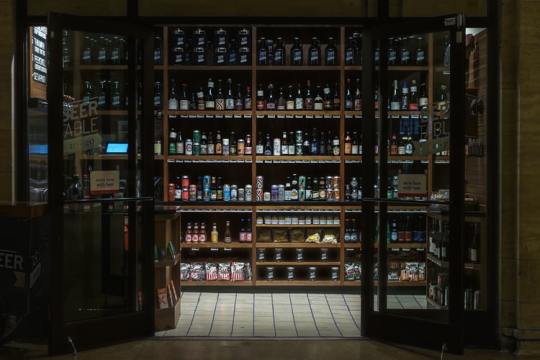
0 notes
Text
Green hand Winemaking Technology (8)-Main microorganisms in winemaking
Two or two drunk Although wine is produced by Saccharomyces cerevisiae, winemaking is a systematic project, which is the result of the unity and cooperation of many microorganisms. Generally speaking, the richer the flavor of wine, the more complicated the microorganisms participating in the winemaking process.
The first category is mold.
Mold, in simple terms, is the "growth hair" on food seen in daily life. Mold is usually aerobic and needs to adhere to the surface of the object to grow. Therefore, the koji should be separated and stacked during the cultivation of koji. There is a certain amount of oxygen in the gap between the grains in the early stage of fermentation in the tank, which can be used for mold growth. The sinking and yeast release carbon dioxide, and the mold gradually dies. The main role of molds in wine making is to secrete "amylases", that is, they participate in the process of gradually decomposing grain starch into sugars for yeast to use. Since "enzymes" can exist in the mash for a long time, even in the middle and late stages of fermentation The mold dies, and the enzymes it secretes continue to work. Different types of molds secrete amylases with different strengths, so different brewing processes are also selectively cultivating different molds. Generally, the molds involved in fermentation are Rhizopus, Aspergillus, Mucor, Trichoderma, etc.
The second category is yeast.
Yeast is commonly used in making steamed buns and bread, and another major use is to make wine. In nature, yeasts are mainly distributed on the surface of vegetables and fruits. Many yeasts are also enriched and grown when making koji. Yeasts are "facultative anaerobic microorganisms". They need to use oxygen when they grow and reproduce and show aerobic properties. They do not need oxygen during alcohol fermentation and show anaerobic properties. In fact, the anaerobicity of yeast can be seen as a means of survival when he is threatened by "suffocation". Alcohol is not his purpose. His purpose is to survive in an anaerobic environment. Alcohol is only the "toxicity" of this process. product". Different kinds of yeasts have great differences in wine production efficiency under different environments. Generally, Saccharomyces cerevisiae, grape juice yeast, Hansenula yeast, Pichia pastoris, Candida etc. are used in winemaking.
The third category, bacteria.
There are many kinds of bacteria in nature. Some are beneficial to humans, and some are harmful to humans. The commonly heard are lactic acid bacteria, acetic acid bacteria, Staphylococcus aureus, Helicobacter pylori and so on. The main bacteria involved in the winemaking process are lactic acid bacteria, acetic acid bacteria, caproic acid bacteria and so on.
Lactic acid bacteria are a type of bacteria that exist in large quantities in nature. Because winemaking is an open operation, lactic acid bacteria cannot be avoided even if it is clean. Fortunately, lactic acid bacteria produce lactic acid and ethyl lactate during the winemaking process. Ethyl lactate is an important ester in liquor. Fragrance, it won't work without it. Acetic acid bacteria also exist in large quantities in nature, so acetic acid bacteria can not be avoided in winemaking. Acetic acid bacteria can secrete acetic acid, also known as acetic acid, which is one of the main flavor substances in liquor. At the same time, acetic acid reacts with ethanol to produce ethyl acetate, which is also an important flavor substance. Caproic acid bacteria are the bacteria that play a major role in the brewing of Luzhou-flavor wines. Caproic acid bacteria secrete caproic acid. Caproic acid reacts with ethanol to produce ethyl caproate, which becomes the representative flavor substance of Luzhou-flavor wine. Caproic acid bacteria are anaerobic bacteria and require special mud pits for cultivation.
The types of microorganisms involved in the winemaking process are diverse and large in number. The above-mentioned types play a major role, but other microorganisms that exist at the same time cannot be ignored. Generally speaking, brewing microorganisms mainly come from koji, and the type and quality of koji are also directly related to the quality of wine. Daqu usually contains hundreds or thousands of microorganisms, Xiaoqu contains dozens of microorganisms, and bran yeast contains one or several microorganisms. With the development of modern technology, sometimes pure microorganisms cultured separately are used to enhance its quantity and role in fermented mash, such as active dry yeast.
0 notes
Photo
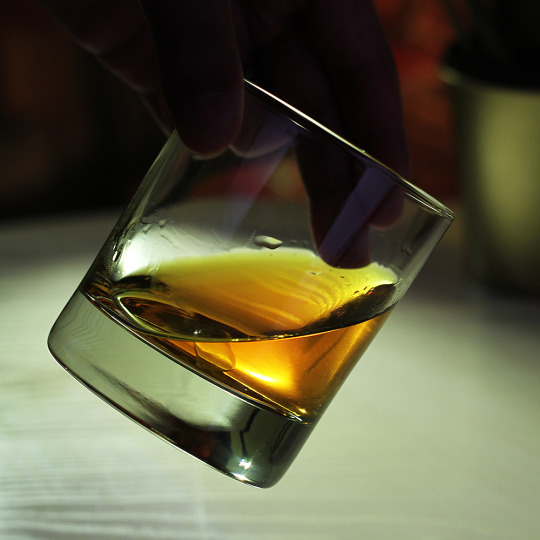
How to make wine more flavorful?
Foreword: When you understand the brewing process, you can guide you to brew more flavored wine, mainly because of the richer raw materials and the arrangement and combination between them. Different malt combinations. The malt produced in different countries will directly affect the flavor, and different degrees of roasting will also make the malt produce various aromas. If you have enough time, you can try roasting malt yourself in a household oven, or smoking malt. Think about it, "The special malt in this wine is the best fruit I picked from the deep mountains in the northeast and smoked it slowly. Therefore, if you carefully capture it, there will be a special woody aroma in it. The reason for this I did it to commemorate the journey of backpacking alone in Alaska when I was 21 years old." When I said this to my friend in a low-key and proud manner, I took a sip of wine and closed my eyes and took a deep breath, as if I was sitting. In the virgin forest where the heavy snow has settled, the bonfire in front of you makes a crackling sound, and there is a brilliant Milky Way above your head. . . seasoning. The boiling process is like boiling soup, you can try to put something in it. When I first made wine, I saw a few pieces of cinnamon on my hand. I chopped and threw the bacheba into the pot. The wine came out. . . A big flavor! So you must put the seasoning in the right amount, it will not be good to cover up the flavor of the wine itself. Before sealing the fermenter, before bottling, you can also put some seasonings, but remember to sterilize it. A friend once made sweet-scented osmanthus wheat beer. It tasted a charming aroma of peach juice. It was easy to taste and couldn't hold it. A brief comment is a new generation of deprived wine! The choice of hops. Before bottling, you can still put in some hops. At this time, the hops will only leave the aroma without increasing the bitterness of the wine. This method is called dry hopping. Yeast selection. The aroma produced by yeast is an important part of beer flavor. You can try different yeast varieties. Second choice of sugar. If you don't want Erfa to produce other flavors, use rock sugar. On the contrary, brown sugar, honey, and maple syrup will affect the flavor of the wine. Use your imagination! Aging. With the passage of time, the fermented beer in the bottle will become smoother and smoother and the aroma will change. Basically, you can fill dozens of bottles of wine at a time. You can mark it and open a bottle in a month. At the same time, you can record your own wine tasting experience and explore the performance of a wine in different periods. This is great for future winemaking. helpful. Finally, beer is an extremely colorful world, far more than the big industrial beer in our impression, and we welcome more friends to enter this world. Friends in Shenzhen I can come to guide.
0 notes
Photo
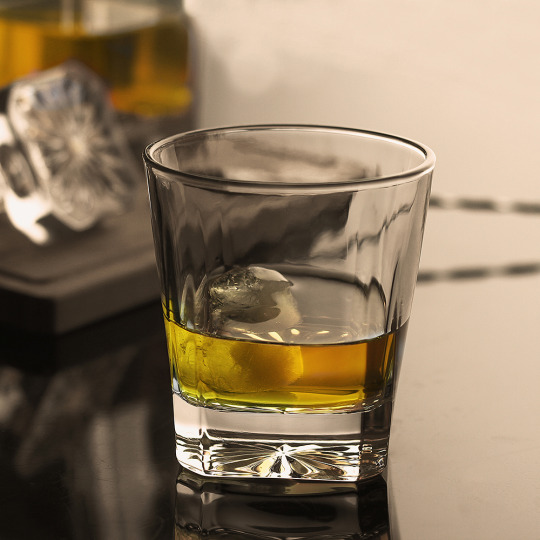
Although drinking whiskey most of the time is about being at ease, you can drink it as you feel comfortable, but if you really want to appreciate the charm of whiskey, it is best to try the drinking method handed down by the predecessors. After all, these drinking methods have been tested by time, and each drinking method will make people experience a new and different feeling of whiskey.
Water cutting
The "water cut method" was originally one of the drinking methods of Japanese sake, but in order to stimulate the sluggish alcohol consumption market after World War II, Japanese wine merchants grafted this drinking method to whiskey. But what is unexpected is that this drinking method seems to be tailor-made for whiskey. It not only reduces the spicyness of the whiskey perfectly, but also highlights the aroma and sweetness.
First put a large ice cube in the glass, then pour whiskey and water (usually 30ml whiskey + 75ml water) in a ratio of 1:2.5. This is the "water cutting method". The whiskey diluted with ice cubes and water is not as strong and stimulating as originally, but it presents a light and elegant flavor, which is very suitable for catering.
If you can't stand the high alcohol content of whiskey, but want to experience the original mellow taste of whiskey, you might as well try the "water cutting method". Highball "Highball" is actually a collective term for a series of spirits + carbonated drink cocktails. Jin and Tonic is Highball, and Erguotou and Coke are also Highball. But the most common one is whiskey and soda.
The Highball drinking method originated from the United Kingdom can be said to be popular all over the world, but the Japanese are the most poisoned. The Japanese say that a friend who has not drunk Highball together in an izakaya is not a real friend.
And speaking of the specific drinking method of Highball, it is also very simple. First prepare a long and thin Highball cup, then fill the cup with 3-4 square ice cubes, then pour about 30ml of whiskey and 100ml of soda water in sequence, and finally stir well. If you want to add another fragrance, you can also add lemon slices.
Because of the bubble properties of soda water, it will make this whiskey drink very refreshing, and it will also make the body of the whiskey lighter.
In the hot summer, it is not necessary to eat watermelon to relieve the heat. A cup of Highball like this is also very good. Pure drinking In the sacred place of whisky-Islay, most people respect the pure drinking method. They believe that not adding any drinks to the whiskey and tasting it directly at room temperature is the greatest respect for the "water of life" whiskey.
If Highball feels free, unrestrained, and uninhibited, then pure drink feels conservative, prudent and mature. Pure drinking allows people to experience the most original flavor of whiskey to the greatest extent. If you taste it carefully, the aroma and mellowness of whiskey will roll in your mouth.
If you want to drink purely, the choice of cups is also sloppy, it is best to choose "tulip cups." Because the mouth of the glass is slightly closed, the aroma of the whiskey will be more concentrated and slowly emitted.
Add ice to enlarge ice cube/hockey puck, this drinking method is more common. Put a large ice cube or puck in a small glass, and then pour the whiskey directly. It should be noted that the ice cubes must be large, and crushed ice cannot be added, because crushed ice will melt faster and will dilute the taste of whiskey.
Since the temperature of the ice is very low, large ice cubes/hockey balls and a relatively slow melting speed can effectively lock part of the aroma and spicy taste of the whiskey. After the ice slowly melts into water, the aroma of the wine will slowly begin to release, and the aftertaste will be longer. Therefore, drinking whiskey with ice, there is no special feeling at first, but the surprise is behind, and the rich aroma of the wine is waiting for you in the back. Adding water In Scotland, there is a saying: never add water when drinking whiskey, and don’t
0 notes
Photo
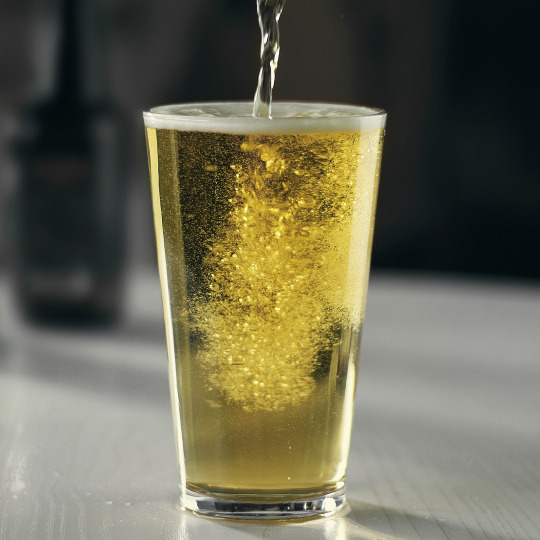
How to make a beer? Section One
Foreword: The method I described is based on my own personal experience. Brewing beer is a tedious and tiring work, and there are a lot of equipment involved. If you buy a set of equipment on a whim and leave it there once or twice to eat ashes, it is quite a waste. Therefore, I follow the principle of "simple, usable, and low-cost" when introducing equipment. In addition, for novice brewers, the recommended amount at a time is about 10L, so that it will be more convenient to carry and cool, and the fermentation barrel will be small, so it may be stored in the refrigerator. Because for home brew, the fermentation environment is the most difficult to control.
a. Raw materials: water, yeast, malt, hops.
Water: Distilled water is better for the first brew, with neutral pH, and there are no trace elements that affect the flavor of the wine, so there are many less uncertain factors. After you are familiar with the process, you can use tap water at home, but it is best to connect a filter device. A friend of mine spent time buying a filter device like the one used in the water bar to filter tap water. According to his reaction, the effect is not bad.Yeast: buy online. When buying it, distinguish between Ale yeast and Lager yeast. The fermentation temperature of the two is different. Generally, Aier yeast is 16-20 degrees Celsius, and Lager is 6-10 degrees Celsius. It is recommended to buy Al Yeast first, first, you can feel the different flavors of the industrialized beer (almost all lagers) that you usually drink, and second, the fermentation temperature will be more suitable this season.Hops: buy online. Pay attention to the introduction of hops, usually it is fragrant flower, bitter flower or bitter flower. Fragrant flowers mainly provide aroma, and bitter flowers mainly provide bitterness. It is recommended that you can buy several at a time, and then slowly choose the right hops in practice.Malt: Divided into barley malt and wheat malt. All beer needs barley malt, and wheat beer contains 40% to 60% wheat. In addition, you can also find burnt malt, burnt black malt and crystal malt. Caramelized malt will provide various roasting aromas such as honey, oak, caramel, and coffee. Charred black malt will provide a heavier aroma such as chocolate, coffee, and coke aroma. The amount of charred malt is generally less than 15%, and charred malt is less than 5%. In addition to considering the flavor you want, you must also consider the pH value of mashing. Will talk about it below. Crystal malt is cooked and the starch inside has been converted into non-fermentable sugar, which cannot be decomposed by yeast, so it will increase the sweetness of the wine. Wheat is used in large quantities in wheat beer, and the wine will appear cloudy and turbid, and it will have a banana-like aroma and the unique sourness of wheat beer. If it is not wheat beer, adding a small amount (about 5%) of wheat will also make the wine smoother, fuller, and more delicate and lasting. The malt needs to be crushed (the outer shell is cracked but not crushed to the extent) before it can be used for wine making, so it will require equipment to crush grain. There are usually hand-turned and electric ones, but if it’s just the first time making wine, it would be troublesome and tiring to buy them. So please ask the malt merchant if you can grind the malt in advance.
0 notes
Text
Basic brewing steps, principles and equipment selection of home brewed beer Part2
6. Cycloprecipitation
This is an ancient, energy-saving, but effective way. Stir the wort counterclockwise vigorously to form a vortex, and negative pressure will be generated in the middle of the vortex. The impurities in the wort will gradually concentrate in the center of the barrel and pile up into a small hill. Afterwards, collecting wort from the vicinity of the barrel wall can fully avoid the problem of impurities blocking the wort collection pipeline. The counterclockwise is because we are in the northern hemisphere, and the counterclockwise rotation will be more durable and energy-saving under the influence of the earth's rotation, which will be more obvious in large equipment.
Home brewing equipment selection: long handle (pay attention to disinfection)
7. Cooling
In this step, we need to quickly reduce the wort temperature below 25°C. There are four reasons for cooling hot wort: first, high-temperature wort is easy to oxidize, which affects the flavor; second, hot wort within a certain temperature range is easy to be infected with bacteria; third, when yeast is added to high-temperature wort, the yeast will be directly scalded ; Fourth, the condensed solids will precipitate after the wort is cooled to further clarify the wine body and remove off-flavors.
Home brewing equipment options: cooling coils, plate heat exchangers, countercurrent coils
a) Cooling coil
Advantages: cheap; easy to use, no risk of clogging; easy to clean; no filtering problems of condensate, because the coil can be cooled first and then spin down.
Disadvantages: long cooling time and poor effect. It takes at least 45 minutes to cool 20L wort with a coil tube. It needs to be used in combination with a frozen mineral water bottle, which increases the risk of bacteria and oxidation, and consumes energy.
b) Plate heat exchanger
Advantages: The cooling effect is excellent. If the cooling water is cooled in advance, the cooling time is basically the time for the wort to move from the boiling barrel to the fermentation barrel, which is estimated to be about 5 minutes.
Disadvantages: expensive; if the rotation is not complete, it will start to cool down and there will be a risk of clogging. Once clogged, it can only be soaked in hot alkali, and then washed with water; the cleaning after each use requires backwashing, which is expected to be more expensive than the coil Three to five minutes; there may be a problem of filtering condensate.
Principle: The hot wort and cooling water form countercurrent and full contact in a very, very thin and flat environment, which greatly increases the heat exchange area and improves the efficiency of heat exchange. Due to the countercurrent flow, the hot wort is getting colder and colder at the same time, the cooling water in contact with each other is getting colder and colder, so as to achieve the purpose of instantaneous cooling.
The lower the temperature of the cooling water and the faster the flow rate relative to the hot wort, the better the cooling effect.
c) Countercurrent coil
Advantages: the cooling effect is very good, not much worse than the plate replacement; relatively speaking, it is not as easy to block as the plate replacement; cleaning is slightly easier than the plate replacement.
Disadvantages: large size, occupying space; high price, no advantage over plate replacement; also has some clogging risks; also requires backflushing when cleaning; there may also be condensate filtration problems.
8. Yeast inoculation and oxygenation
Yeast fermentation needs to go through a process of first aerobic and then anaerobic. The aerobic stage allows the yeast to multiply enough for fermentation, and the reproduction of the yeast requires the participation of a large amount of oxygen; the anaerobic stage is the stage where the yeast really plays the role of fermentation, in an anaerobic environment (anaerobic is due to the early reproduction The oxygen has been exhausted in the stage), the survival of yeast needs to consume sugar, and emit alcohol and carbon dioxide. These two metabolites of yeast are the main components of beer. The purpose of oxygenation is to increase the oxygen content of wort, which is more conducive to the rapid reproduction of yeast.
Home brewing equipment selection: flower, bird, fish and insect oxygenation pump (pay attention to disinfection when using)
9. Fermentation stage
This is the stage of real "beer production". It looks like you were making wine in the early stage, but in fact everything you do is to create a comfortable breeding environment for yeast. In a sense, yeast is the real brewer. If you don't serve the yeast well, your wine will not taste good. This link is actually very complicated, and changes in any factors such as time and temperature will affect the fermentation results. If you can talk about it in detail, you can say several books. If you want to understand the detailed principles of this link, please move to the relevant professional books. Any of them is more comprehensive and correct than what I said. I will only explain the homebrew process and equipment selection.
Depending on the beer style, the fermentation time varies. Generally, in the home brewing environment, the main fermentation time for wheat, IPA and other styles can be 1-2 weeks; for heavy flavor styles such as Porter, Stout, and barley spirits, it takes longer, possibly about 1 month. , The maturing time will be longer.
The fermentation stage is roughly divided into the high-speed yeast propagation period, the vigorous fermentation period, the stable fermentation period, the mature period and so on. During this period, at least it should be protected from light and oxygen, and it is best to achieve constant temperature fermentation if possible.
Home brewing equipment options: cones, glass or plastic fermentation barrels
a) Cone fermentation tank
Advantages: This is basically the fermentation tank in the professional brewing equipment, which can maintain pressure, adjust the temperature, and drain yeast, and has all the requirements for fermentation.
Disadvantages: expensive.
b) Glass fermentation tank
Advantages: good air tightness.
Disadvantages: heavy, expensive, fragile, can not be protected from light.
c) Plastic fermentation tank
Advantages: cost-effective; strong and durable.
Disadvantages: The air tightness is slightly worse than that of glass barrels. This is due to the large molecular gaps of plastic materials, and air molecules can pass through these gaps, which cannot be solved. Of course, if you are unlucky and come across a leaky barrel with a workmanship problem, it is not a problem with plastic barrels. It is a factory process problem. What you need to do is to switch suppliers, not to reject plastic fermentation barrels. .
Plastic fermentation barrels are the most common choice for brewers.
In the plastic fermentation barrel, a new concept of adopting a tapered design at the bottom has appeared. This design will make the yeast that complete the fermentation work downward and toward the center of the barrel, which is more convenient for later filling or pouring (inverted barrels). The issue of barrels is quite controversial, and I will explain in detail in the next paragraph), you can give it a try.
When choosing a plastic fermentation tank, it is recommended that you choose a model with a pagoda faucet, which is convenient to measure the concentration of wort at any time, and to facilitate the transfer of wine or wort. Of course, laziness comes at the cost of laziness. Fermentation barrels with faucets have two major shortcomings: one is that after all, a hole is opened, and more attention should be paid to disinfection and infection; second, if the barrel has an additional faucet Come out, the usual storage will be a bit more troublesome, because the bucket can't be covered. Even with these shortcomings, he still can't cover up his convenience. Anyway, I DIY a faucet for each of my fermentation barrels. It's so cool... You can choose according to your own situation.
Pouring the barrel refers to the transfer of the wine to another fermentation barrel during the maturation period after the main fermentation. Modern beer technology research shows that soaking yeast in the wine for a long time may cause the problem of yeast autolysis, or even if it is not as serious as autolysis, there is still a miscellaneous taste. This is why there is a step in the commercial brewing process to drain the yeast through the valve at the bottom of the conical fermentation tank. The biggest purpose of pouring barrels is to imitate the commercial brewing process as much as possible in the home brewing environment, to ensure the taste of wine, and to realize the separation of yeast and wine liquor after main fermentation.
The reason why there is controversy over the dumping of barrels is because many people think that it will greatly increase the risk of infection, but personally think that the infection is not that serious. As long as the workmanship is good and the disinfection is passed, this is not a problem. The prerequisite for me not to pour the bucket is that I have tried it, anyway, my tongue can't drink out the influence of the flavor on the flavor. And I think it’s a pleasure to make wine by yourself. When the wine is made, everyone thinks it tastes good, and it’s the most important thing to be happy. If you make it so troublesome, you might get a headache and laziness when you think about making a wine. Up!
d) Thermostat + freezer
This is an advanced equipment, mainly used to control the fermentation temperature.
Please ignore that ugly piece of cloth, it is only used for shading. If you use a freezer instead of a display cabinet, there is no problem.
Principle: The thermostat is also a power strip at the same time, and the power plug of the freezer is plugged into the thermostat. The temperature-controlled temperature probe is extended into the freezer to detect the temperature. When the temperature reaches a predetermined temperature range, the temperature control will automatically turn on or off the function of the power strip to realize the power on and off of the freezer, thereby achieving the temperature control effect.
10. Bottling & adding second sugar
This step is easy to understand. After the fermentation is complete, there must be something to hold a bar. This step is for this.
Few people in the home brewing environment pour mature wine into draft beer barrels, because this will involve a series of equipment purchase, safety and other issues. Even KEG barrels (Coke barrels) will involve pressure control, safety, and how to buy food grade. Carbon dioxide and other issues, so most people choose to preserve their wine by bottling before becoming a super self-brewed enthusiast.
The bottle should be brown as much as possible, which will greatly reduce the occurrence of photochemical reactions and avoid the formation of "sunlight smell" in beer. Since most home brews use plastic enzyme barrels, pressure-holding fermentation cannot be achieved. In order to make the beer in the bottle have a "killing taste", diferred sugar (usually glucose or other sugars that are easily used by yeast) can be added when bottling, so that the yeast in the bottle can use these sugars to continue fermentation in the bottle Thereby, carbon dioxide is generated and the taste is killing.
Home brewing equipment options: (bottle + bottle cap + capping machine) or (swing cap bottle); wine bottle drainer
a) Capping machine
Everyone has seen bottles and caps, so I won’t show the picture, just show the capping machine.
The one in Figure 2 has not been used. However, I feel that Figure 2 is more space-saving and more advanced than Figure 1, and the details are not clear, so I don't dare to talk nonsense.
b) Swing cap bottle
This kind of good stuff needs to be known to everyone, which is very convenient. Everyone will understand the last picture in seconds.
It should be noted that the silicone ring on the swing cover may have aging problems for a long time, so don't use a batch of bottles for a lifetime, and change a batch when it is almost time. It is not enough to save that little money.
c) Wine bottle drainer
After the bottle is used to sterilize, the sterilizing water inside is dried.
11. Other small things that may be used in homebrew
These little things include but are not limited to:
1) Siphon tube or silicone tube (usually with inner diameter of 10mm/outer diameter of 14mm), ear suction ball. It is used in many places such as transferring wort or liquor;
2) 2L measuring cylinder (for holding water, washing lees, etc., many uses);
3) Filter head (used for wort filtration, the effect is very good, the filtration is very fine, but it is easy to block);
4) Filter (need to be equipped with a pagoda adapter. The effect is very good, the filter is very fine, but it is easy to block. It can be used for cold wort filtration, it must be turned first);
5) Various conversion heads (used to connect various equipment and pipelines, screws to connect various equipment, and pagoda heads to connect various silicone tubes, which require matching tape to use. It is extremely convenient. The most commonly used is 4 minutes to 10mm of);
6) Silicone tube fixing device (may be used when siphoning);
7) Grams (for weighing hops, Irish moss, difert sugar, various reagents);
8) Thermometer (used to monitor the temperature of saccharification, cooling, fermentation, etc. It is divided into three types: alcohol, mercury, and electronic. Electronic is divided into two types: long wire and probe. Mercury is the most accurate, but there is a risk of pollution; it is generally used A long-line electronic thermometer is enough, the temperature is relatively accurate, the key is easy to use);
9) Magnetic pump (used when transferring wine or wort);
Note: The magnetic pump has no self-priming function, so the pump must be placed under the fermentation tank so that the disinfectant in the fermentation tank can flow into the magnetic pump under the action of gravity.
10) Submersible pump (generally only used to pump water);
The pump can be placed directly under the water, and the whole machine needs to be under the water surface. To have a long lift, that is, a strong one.
11) Disinfectant, small watering can (iodine, Milton no-cleansing and disinfection tablets, and stansan are the three most common. After all, iodophors are not edible. Milton no-cleansing and disinfection tablets are said to be no-clean, but they actually have a smell. Strongly recommend stansan. No It is colorless, odorless and free of cleaning. If it is preserved well, it can be used for more than a month after preparing a large barrel. In theory, it can be used for a lifetime as long as the PH value is always less than 3.5. It is convenient and cheap, and it is sold at Duojie's house);
12) Triangular measuring cylinder and yeast collection bottle;
PS: Now many Taobao home brewing equipment sellers actually have packages of complete brewing equipment. It's about 1,000. Some advanced ones, such as equipped with a pair of rollers or even an electric pair of rollers or plate changers plus pumps, etc., the complete set of more than 2,000 will stop. When purchasing the equipment you want to use, you can refer to the seller’s package content and make corresponding adjustments if necessary.
For more detailed questions about equipment selection, please feel free to contact me, and I will tell you if I know.
0 notes
Text
Basic brewing steps, principles and equipment selection of home brewed beer Part 1
1. Crushing malt
The biggest purpose of crushing malt is to break the solubles out of the husk, increase the surface area, make the solubles easier to precipitate, and increase the efficiency of saccharification. The best effect is that the crumbs are not broken. The more broken the crumbs are, the more the saccharification efficiency can be enhanced. The more complete the husks, the better they can avoid clogging during filtration, and the more it can avoid the precipitation of miscellaneous flavors in the husks. Moisturizing the malt before crushing can enhance the toughness of the husk and keep the husk intact. However, some crushing equipment crushes the soaked malt and will rust. This requires specific analysis of specific issues, and find a way to balance the integrity of the husk and the crushing of the wheat core according to the characteristics of the equipment.
There is also a dust explosion problem. Although it is basically not involved in home brewing, it still needs to be mentioned to everyone. The four conditions for dust explosion are: dust density of 30-50g/m3; closed environment; 12-13% free oxygen; open flame. There is almost no possibility of achieving these conditions at the same time in home brewing, so everyone pays more attention to ventilation.
Home brewing equipment selection: manual malt grinder, hand-cranked counter-roller (+ electric drill), electric counter-roller
a) Manual malt mill
The price of such equipment is roughly around RMB 7,80.
Advantages: cheap; portable; does not occupy space.
Disadvantages: tired; slow.
b) Hand-cranked roller mill
The price is between 200+ and 500+, and different configurations have different prices.
Advantages: faster than manual grinding mills, saving time and effort.
Disadvantages: relatively expensive.
c) Hand-cranked roller mill + electric drill
This is the DIY method of brewing friends, using the kinetic energy of the electric drill to replace the manual work, which is fast and stable, but it must be safe during use. The price of electric drills is around 300-500+ yuan. Before buying, you must communicate with the sellers of the roller and the electric drill to ensure that they can match and avoid trouble.
Advantages: fast and stable; electric drill can also be used in many other scenes or winemaking links.
Disadvantages: Pay attention to safety.
d) Electric counter roller
This kind of equipment is the most convenient. It completely eliminates the role of manpower in the crushing process. It is all done by machines. The crushing effect is stable and the fastest, but it is also the most expensive. The price is roughly around 7-800+ yuan.
Advantages: fast; save time and effort; stable.
Disadvantages: expensive; heavy.
2. Saccharification
Yeast fermentation needs to "eat" sugar, but the malt does not contain maltose, but contains starch. Saccharification is to convert the starch in the malt into sugar under the combined action of a certain temperature and time, which is finally fermented into alcohol and carbon dioxide by yeast.
The saccharification process requires a variety of enzymes in the malt to work together. The most suitable temperature and pH value for different enzymes are also different (home brewing only considers temperature). The two most important enzymes are α-amylase and β- Amylase.
Alpha-amylase is better at cutting large starch molecules. It can be simply understood that its work is relatively rough. It rough-processes long-chain starches and cuts them into short-chain starches. The most suitable temperature for the enzyme is 70-75℃, and the inactivation temperature is 80℃.
β-amylase is better at dealing with short-chain starch molecules, which can be simply understood as it will reprocess the short-chain starch molecules after the action of α-amylase and process them into sugar molecules with a smaller molecular structure. The most suitable temperature for the enzyme is 60-65℃, and the inactivation temperature is 70℃.
The saccharification process should pay attention to heat preservation and temperature control, and the time is generally not less than 60 minutes. It is generally believed that the best temperature of one-step sugar production method used in home brewing should be between 65-68℃. If you need a heavy body, you should let α-amylase play more role, can make the saccharification temperature higher, such as 68 ℃. Heavy wines are often accompanied by higher residual sugars. Most of these sugars are non-fermentable sugars, that is, they cannot be used by yeast to produce alcohol. Therefore, wines with thicker bodies tend to be sweeter. If you need a thinner body, you should allow β-amylase to play more role, which can lower the saccharification temperature, such as 65°C. If you need a particularly thin body, it can even be as low as 62 or 63°C. The thinner body often means that the sugar is decomposed very cleanly by the yeast, and there is basically no residual sugar in the wine. Therefore, the thinner wine tends to be relatively dry (dry means not sweet, similar to dry wine in wine). White, dry red, sweet white, sweet red, etc.).
Of course, the thickness of the wine body is not only determined by the saccharification temperature, but also directly related to the selection of malt. This part of the content is described in detail in the Malt Description chapter.
Home brewing equipment selection: insulation barrel
There are many kinds of insulation barrels, including stainless steel insulation barrels and plastic milk tea barrels. But here is a problem. Homebrew saccharification insulation is different from other heat preservation requirements in that the saccharification barrel of homebrew has many places that need to be connected to the silicone tube in the later stage. The most commonly used silicone tube has an inner diameter of 10mm and an outer diameter of 14mm. The general saccharification bucket faucet may not be suitable for this size. This requires a clamp to tighten the silicone tube, which is troublesome and may cause the silicone tube to fall off due to the weak card. Even burns.
Slow Food, PC Home, Duo Jie, Brewing Star Exclusive Store and other stores are all available.
Slow products are the first to be recommended, because the owner is very DIY. The faucet will be modified with pagoda head valves, which is more suitable for connecting with silicone tubes. It will be slightly more expensive, but it can save a lot of trouble in the later stage.
3. Collect wort and filter
The saccharified wort is actually syrup, which contains a variety of sugars, such as monosaccharides, disaccharides, maltotriose, non-fermentable dextrin, and so on. The collected wort is best to be clear, and do not have impurities such as wheat husks mixed in it, otherwise bad flavors (such as tannins, astringency, etc.) will appear during the later brewing.
Home brewing equipment selection: recommended sieve + filter bag
a) Sieve plate
b) Filter bag
There is no essential difference between the products of each store, and it can be matched with the saccharification barrel.
4. Washing the grains (washing sugar)
The wort obtained in the previous step is called "top wort", and the sugar concentration is very high, often reaching about 18°P. At this time, there is actually a lot of sugar in the lees that does not flow out with the water. The purpose of washing lees is to wash out the sugar remaining in the lees and avoid waste. The wort from the first washing process is called "two-stage wort", the wort from the second stage washing is called "three-stage wort", and so on. Depending on the brewing style, the wort is generally washed 3 -4 times.
Home brewing equipment selection: No special equipment is needed... At most, you need a measuring cylinder to pour the lees to make...
5. Boil the wort
The main purpose of this step is: to fully sterilize and disinfect the wort; to separate out the bitter substances in the hops (to isomerize the alpha acid in the hops into "iso-alpha acid". The bitterness in IPA and other styles comes from different -Alpha acid); evaporates unwanted volatiles (dimethyl sulfide, with a very strong Chinese cabbage taste); accelerates the thermal coagulation process of proteins and other substances to avoid affecting the flavor and body.
A detailed description of the use of hops: the longer the hops are boiled, the more thorough the isomerization of alpha acids into "iso-alpha acids" in hops, that is, the more bitter substances are precipitated, and the bitter the liquor will be. With long-term boiling, the hop essential oil will volatilize more, that is, the less aroma. So here are 2 tips:
a) If you want more bitterness of hops, put it in advance and cook for a while; if you want more hops, put it later and cook it less. If IPA-style beer is brewed, it can even be cast dry.
Dry throwing means that hops are not put in the boiling stage, but after the main fermentation is over, the wine and yeast are separated, the hops are directly put into the dry throwing bag and put into the wine, so that the hops are directly immersed in the wine, fully The aroma of hops is released.
b) Hops can be divided into three types, fragrant flowers, bitter flowers, and both fragrant and bitter flowers. Fragrant hops have a high content of essential oil and are mainly used to provide aroma; bitter flowers have a high alpha acid content and are mainly used to provide bitterness.
The hops put in the early stage of boiling are best bitter flowers, so that the alpha acid can be better used, and the bitter flowers will make him more bitter. The best hops to be put in the late boiling or dry casting are fragrant flowers, so that the hop essential oil can be better used to form a fragrance, and the fragrant flowers will let him form a fragrance. If you throw fragrant flowers in the early stage and bitter flowers in the later stage, it will be embarrassing that the wine is neither bitter nor fragrant!
Home brewing equipment options: gas or electric soup barrel
a) Gas heating soup bucket
Advantages: relatively cheap; easy to clean.
Disadvantages: uncontrollable temperature; heating requires the use of gas or induction cooker, there is a problem of whether a gas stove or induction cooker can bear the weight (for 20L beer, there will be up to about 25 kg of wort in the boiling barrel, if the boiling barrel is poured, you It’s not just the word “miserable”); most of the gas-heated soup barrels are not equipped with a faucet, but a single barrel. There may be many inconveniences in use, such as the transfer of wort only by siphoning .
b) Electric heating soup bucket
Advantages: Has a certain temperature control function; convenient heating; most electric cooking barrels will be equipped with faucets.
Disadvantages: expensive; you must avoid contact with water when cleaning electrical components; you need to consider whether the home will trip.
Gas heating or electric heating barrels have their own advantages and disadvantages. You can choose according to your actual situation.
There are two points to note here:
a) The heating barrel also has the problem of matching the faucet and the silicone tube. For details, see the introduction of the saccharification barrel. Heating barrels can also focus on the barrels of Slow Pinjia. Their barrels can be modified with faucets whether they are heated by gas or electric. Of course, you can also communicate with other sellers whether you can modify the barrel's faucet, or purchase a valve for modification after you buy it.
b) The volume of the boiling barrel must be greater than the volume of the saccharification barrel, 1.5 times the volume of the saccharification barrel, it is better. This will greatly reduce the possibility of panting during the boiling phase, and wash the dregs a few more times to avoid waste (this is a balance between waste and maintaining alcohol content, everyone decides).
0 notes